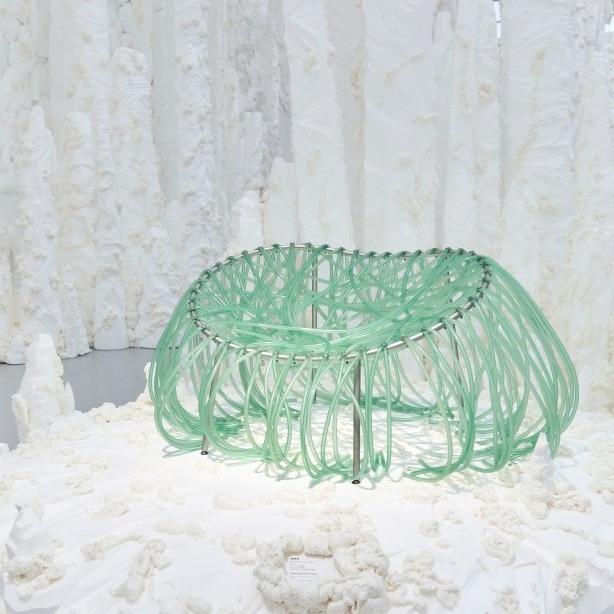As several fairs are being cancelled and many auctions are being postponed, the global coronavirus crisis has severely dimmed the optimism in the art market. Many people have ceased believing that the whole industry is going to bounce-back in 2020.
New York’s governor, Andrew Cuomo, declared a state of emergency on the final day of the Armory Show, as the number of confirmed cases of COVID-19 in New York City grew. Given the climate of uncertainty, crowds were noticeably thinner. As the Financial Times points out, visitor numbers were down from 57,000 last year to 41,000 this year. [1]
Despite the drop in attendance, buyers turned out in force throughout the fair and eventually made seven-figure deals. Based on several important sales reports and market analyses released online over the last two weeks, CAFA ART INFO is going to tease out the trends and the new measures of the Armory Show 2020.
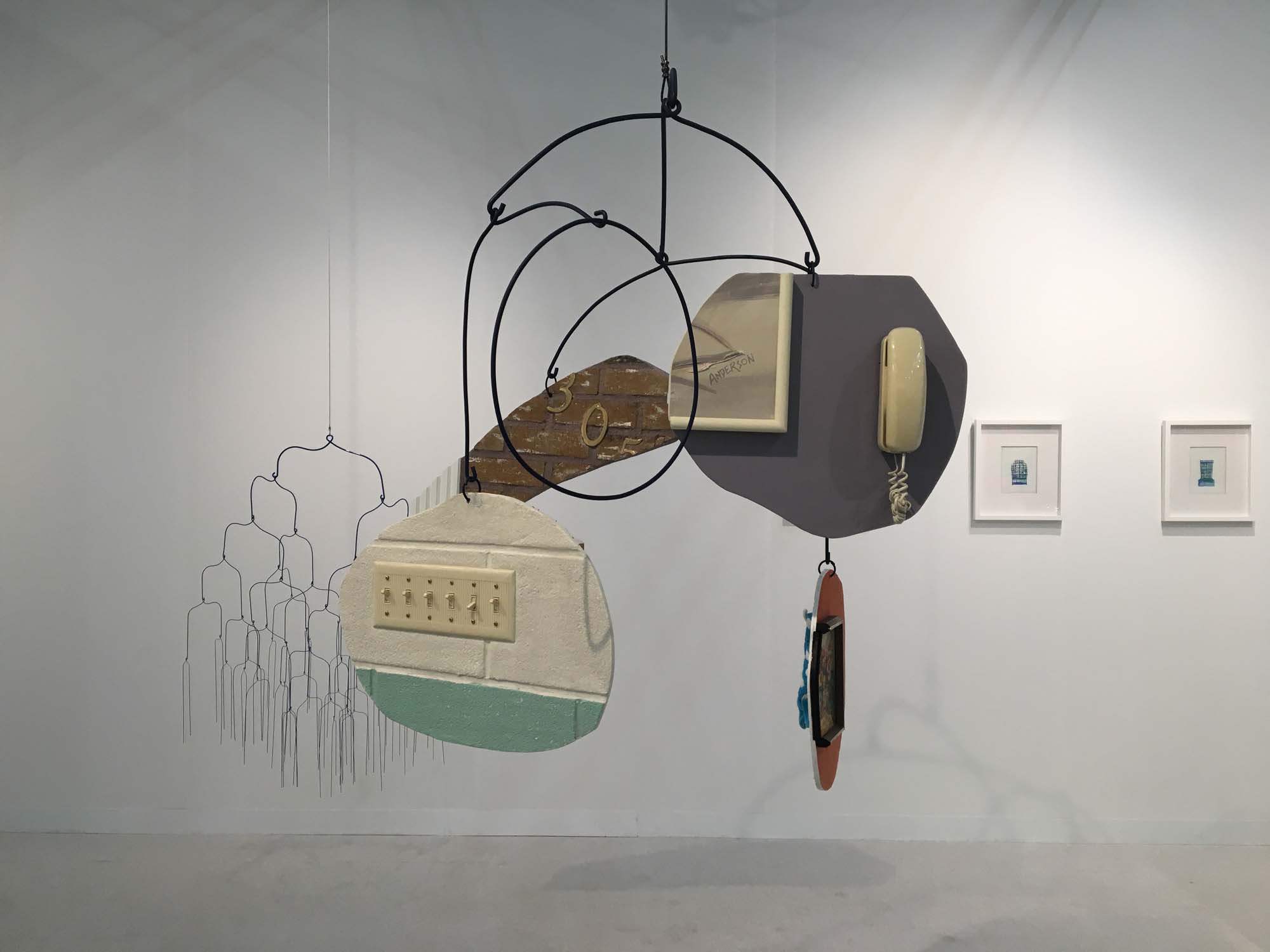
Beth Campbell, Shifting, 2020, Anne Mosseri-Marilio, Basel
Market trends of the Armory Show according to sales reports
According to a list of reported sales pulled together by Artnet, paintings have still resulted in the highest transaction volume ever. Kayne Griffin Corcoran, a gallery from Los Angeles sold two minimalist paintings at a price of $280,000 each. The two paintings were new works by Mary Corse, a female artist born in 1945. Equally noticeable was Kehinde Wiley’s Portrait of Tahiatua Maraetefau II (2019) sold with a price of $240,000.[2] As a Nigerian-American artist born in 1977, Wiley often uses portraits of handsome young black men to explore the complex history of American and his own personal identity.
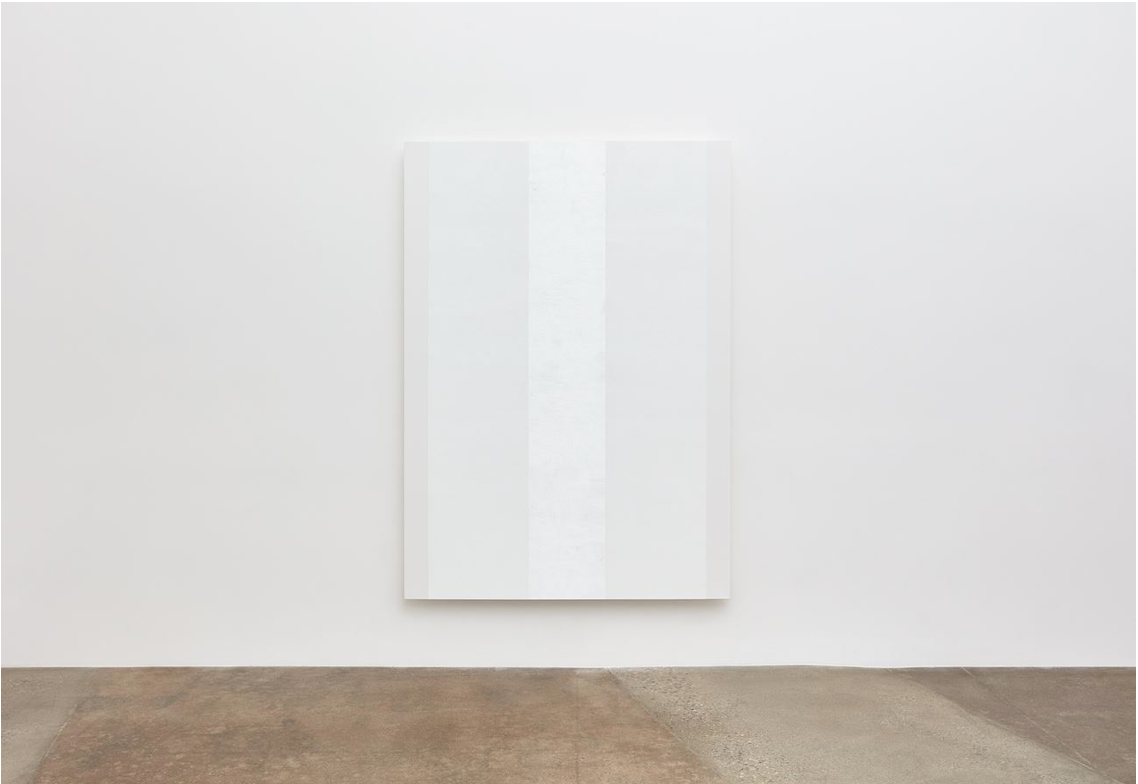
Mary Corse, Untitled (White Narrow Inner Band with White Sides, Beveled), 2019, Courtesy Pace Gallery; Source: https://ocula.com/art-galleries/pace-gallery/artworks/mary-corse/untitled-white-inner-band-white-sides-beveled/
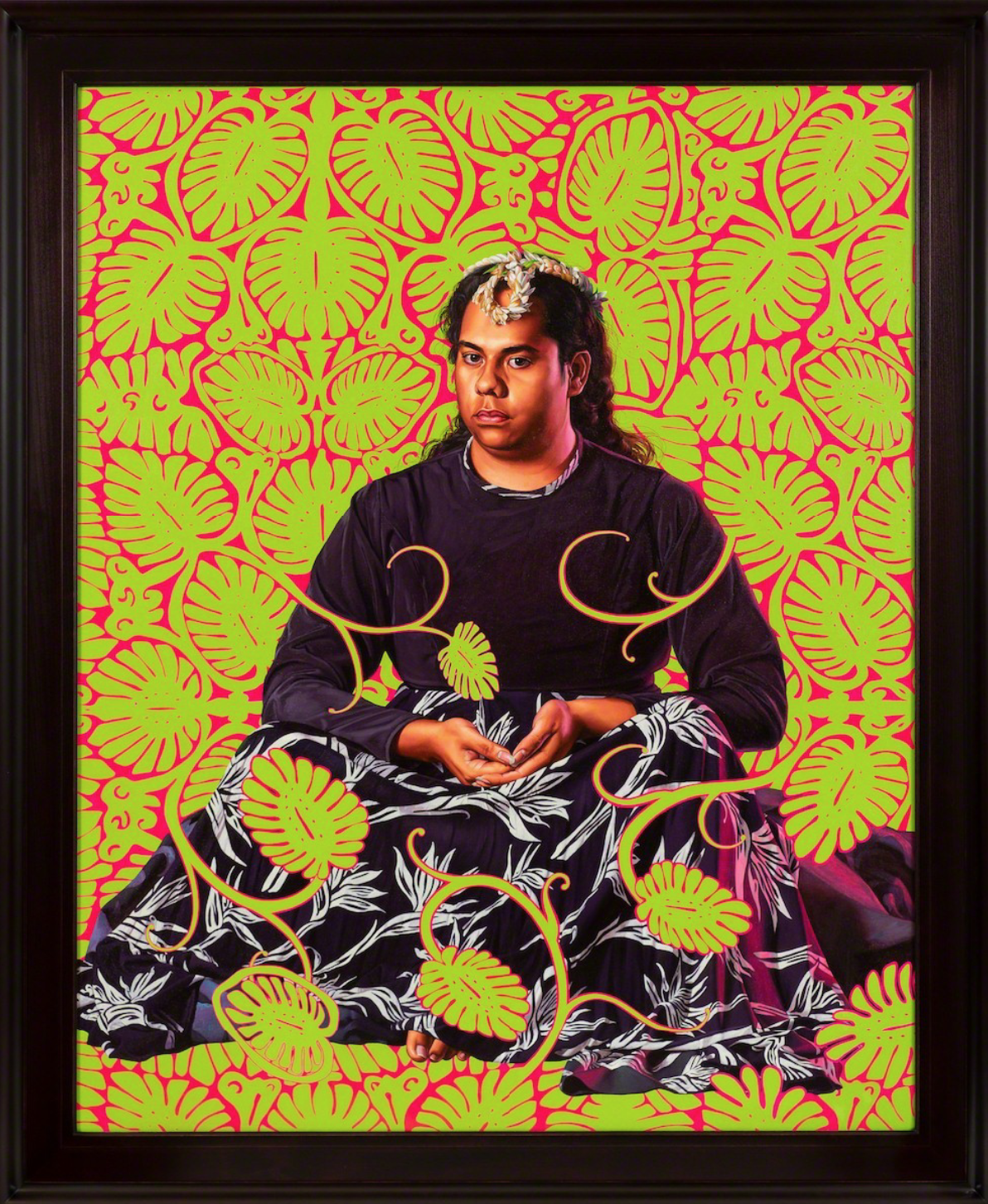
Portrait of Tahiatua Maraetefau II, 2019, Courtesy Galerie templon, paris-Bruxlles. ?Kehinde Wiley Studio Photo DianeArques ADAGP Paris 2019
Source: https://www.artsy.net/artwork/kehinde-wiley-portrait-of-tahiatua-maraetefau-ii
While an increased market value in works by women artists and African American artists might have something to do with the election season and the state of the world, a shifting focus of the collectors towards installations and sculptures is probably due to people’s growing interest in an immersive experience. Los Angeles’s Roberts Projects sold Betye Saar’s monumental mixed-media assemblage Mojotech (1987) for $1.2 million, which became the highest reported sale from the fair.[3] In addition, Stephen Friedman sold Yinka Shonibare’s fiberglass mannequin Skipping Girl II (2019) with a price tag of $139,000.[4]
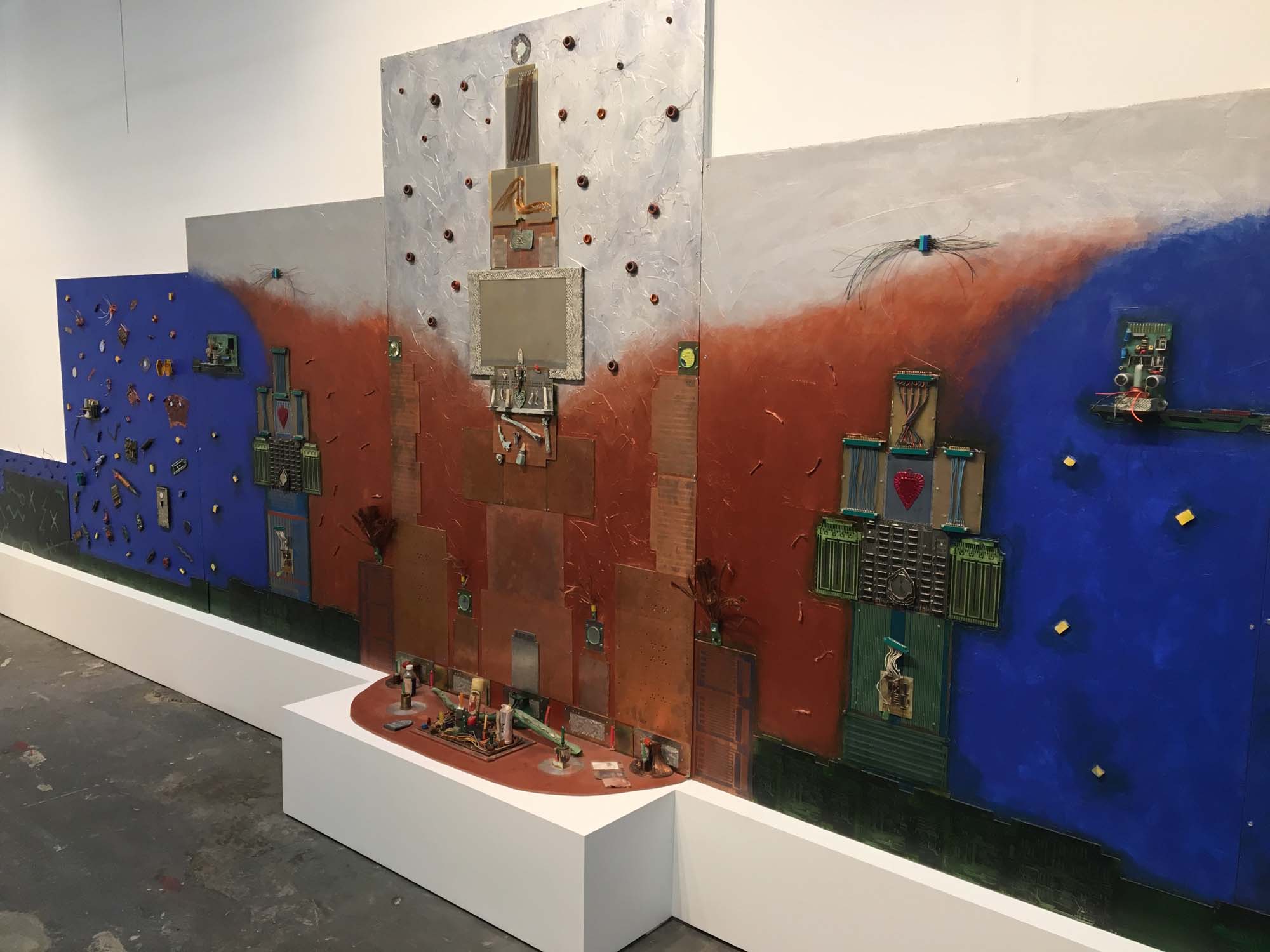 Betye Saar, Mojotech, 1987, Roberts Projects, Los Angeles
Betye Saar, Mojotech, 1987, Roberts Projects, Los Angeles
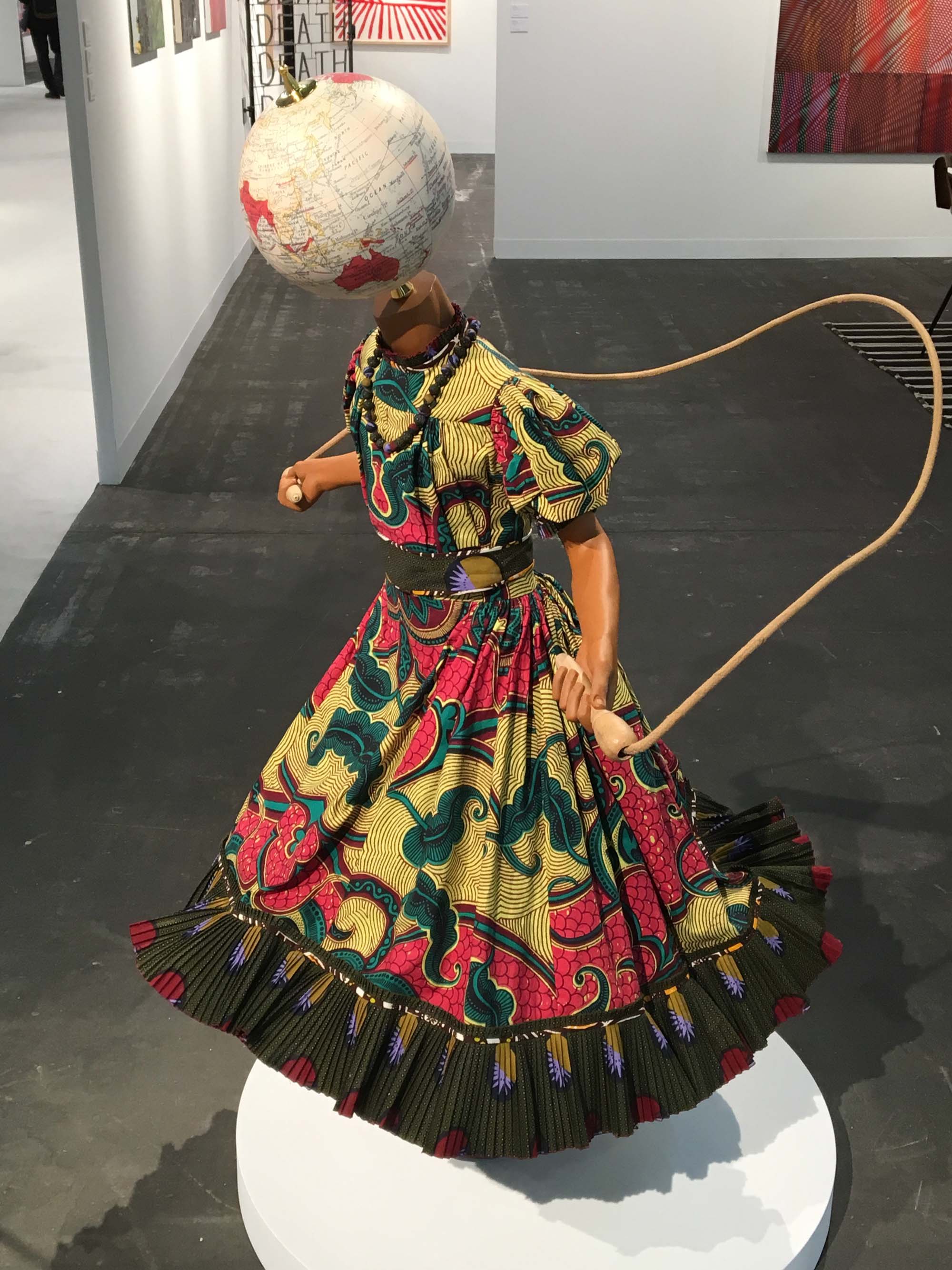
Yinka Shonibare, Skipping Girl II, 2019, Stephen Friedman Gallery, London
Apart from evaluating the trend of the art market from a thematic aspect and a medium aspect, works with rich color and even a full palate account for the main part of the fair. It might relate to what people often see on the computer screen, as it becomes harder for people to satisfy their desires for visual stimulation.
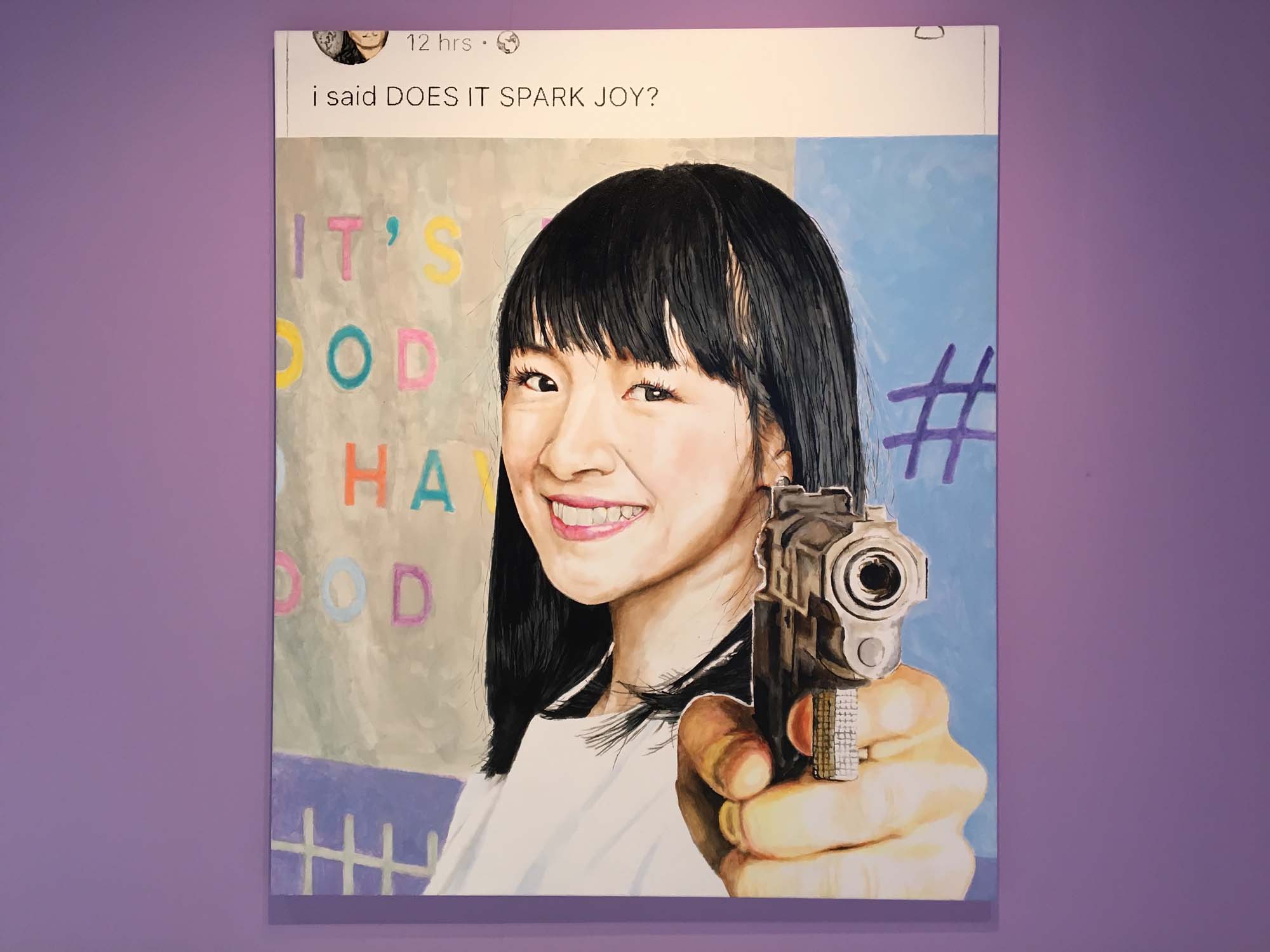
Christine Wang, Marie Kondo, 2020, Night Gallery
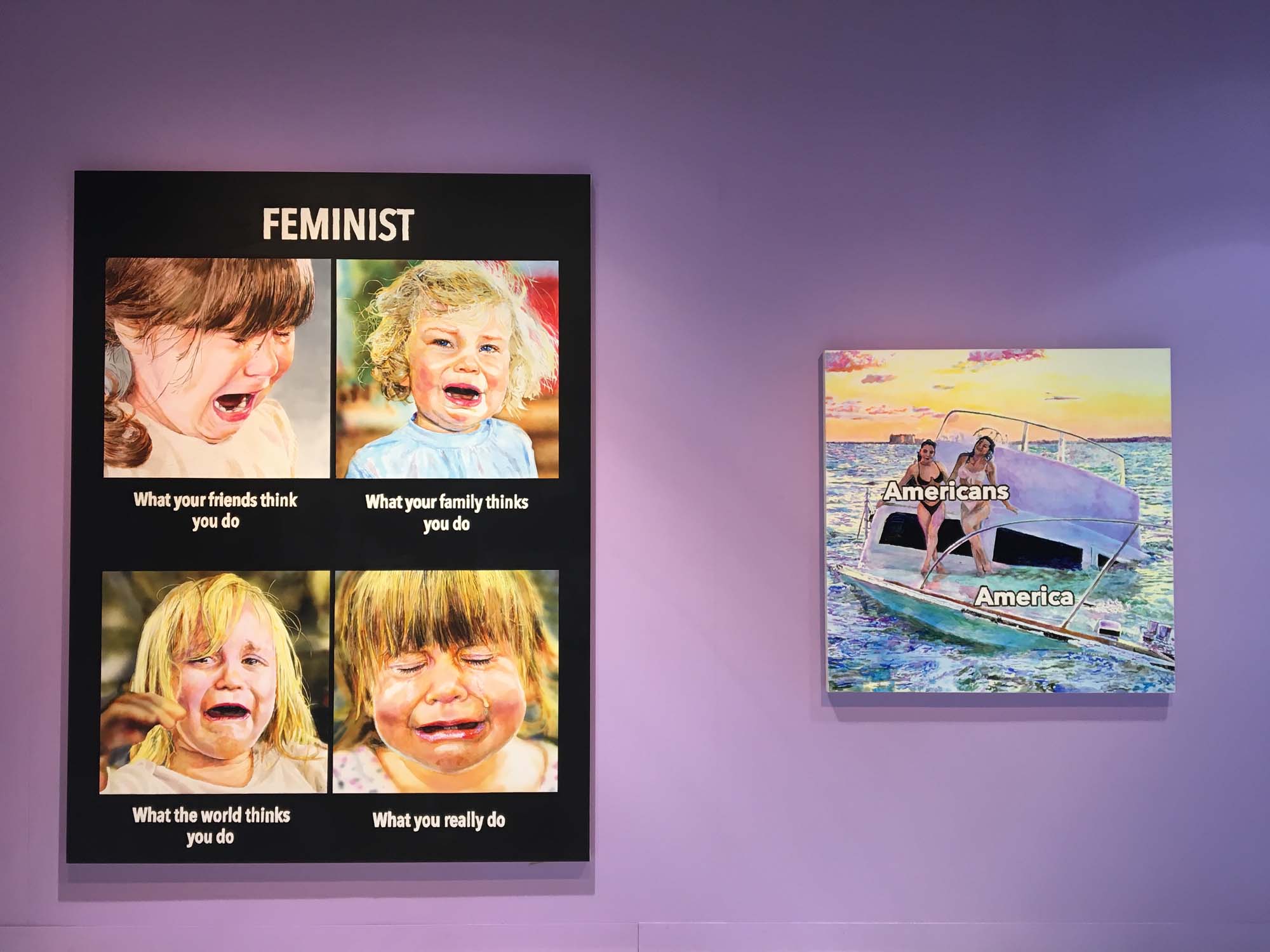
Christine Wang, Feminist and American, 2020, Night Gallery
Preferential policies for mid-sized galleries
According to economist Clare McAndrew’s report “The Art Market 2020,” released by Art Basel and UBS on March 5, dealers’ art fair costs for 2019 were estimated to total $4.6 billion. Sales at fairs also accounted for nearly half (47%) of all sales for galleries with an annual turnover of more than $10 million. However, for galleries with annual turnovers less than $500,000, fair sales accounted for just 30% of their business. For some smaller galleries, going to fairs to get 30% of their sales may not be enough to cover the enormous costs and logistical burden of participation. While mid-size galleries rely heavily on art fairs to boost their international reputation, the stand price is always a huge burden for them. Therefore, it is not surprising to see galleries with sales in excess of $10 million participated in twice as many fairs (eight) as the average for all galleries (four) in 2019.[5]
As art fairs proliferate on a global scale, the entry fees for participants grow year by year. The costs tend to rise in tandem for everyone, but the sales very much skew toward the bigger galleries. Going against that trend, the organizers of the Armory had already reduced stand prices by five percent for all exhibitors since the last edition of the Armory Show (March 7-10, 2019). Moreover, according to the Financial Times, the Armory Show has been adapting the composition of the fair to help mid-size galleries compete with their heavier-weighted peers. In March 2018, Benjamin Genocchio, the director of the Armory Show expanded the Focus section for solo or dual presentations of emerging contemporary artists from 16 to 30 exhibitors. It is also Genocchio that reduced prices for younger exhibitors who participated in the Armory’s 24th edition. He let mid-sized galleries pay about 30 percent less per square foot than those in the main section, and kept the entry-level cost of Focus below $21,000. At the same time, Genocchio increased the average size of the stand at Pier 94, and charged the high-end galleries with a price of $95 per square foot, helping to subsidize Focus.[6]
As in past years, Pier 90 opened an hour before Pier 94, which allowed collectors to set aside their time for mid-sized galleries before rushing toward the main section of the fair. What was different from the past was Pier 90 was entirely devoted to curator-led initiatives this year, providing visitors with a unique and carefully selected viewing experience, which definitely increased the sales at Pier 90.
Audio guide newly added to the educational package for the Armory Show
The Armory Show has a tradition of holding the curatorial summit and many live panel discussions during the fair. However, this year was the first time for the fair to offer a museum-style audio guide. Aiming to give the public access to the voices of trendsetters, the audio guide consisted of 60 comments from curators with high credentials, specialists, and art critics on the works they selected. The audio guide included 49 gallery stands and was extremely user-friendly: no need to download any app, simply dial 646-291-2407 and punch in the code assigned to the specific gallery once you notice any signage with a phone icon.
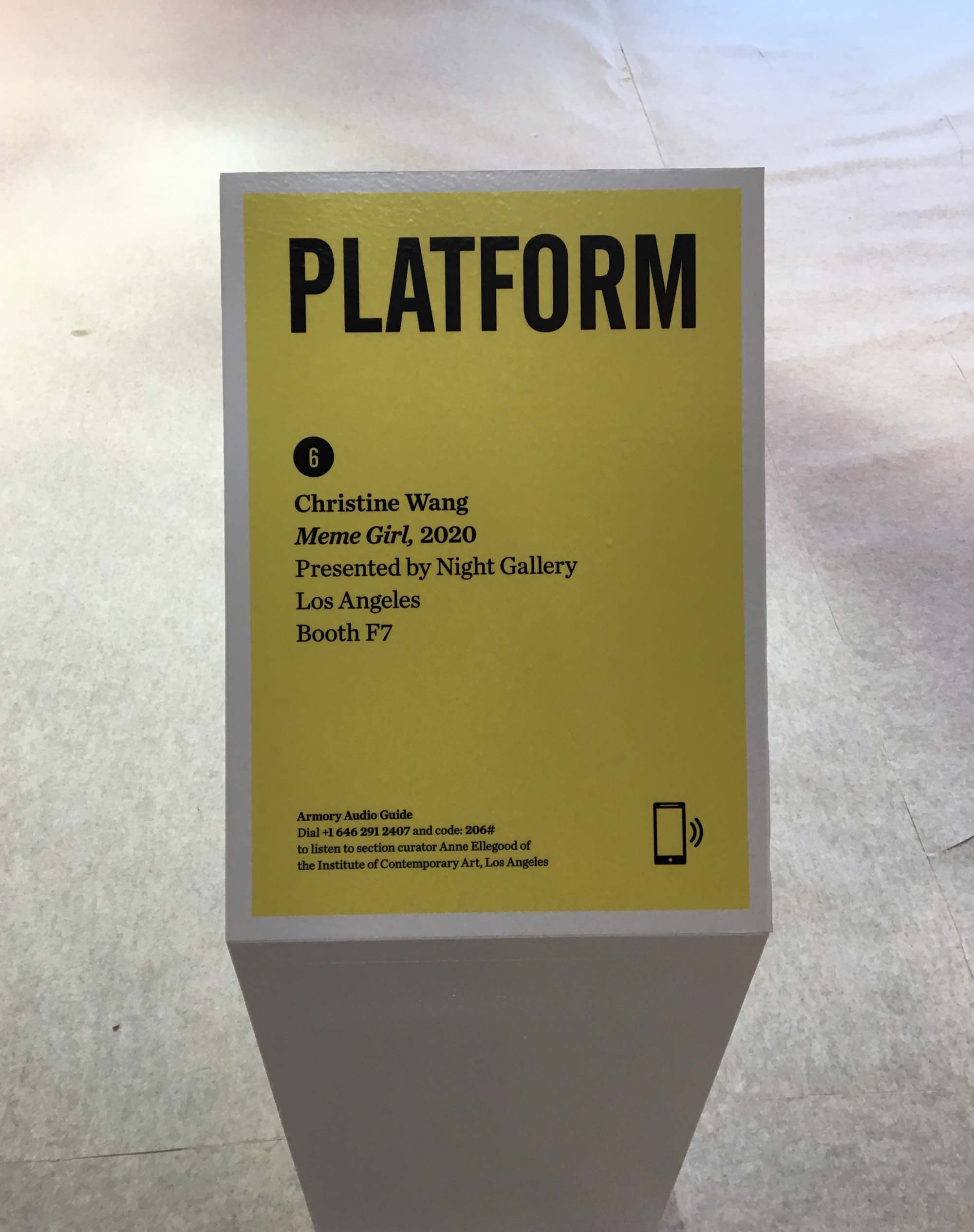
Signage with a phone icon for the audio guide
The Armory Show switches venues and dates
Midway through the fair, the Armory organizers announced that the 2021 edition will no longer stick to the Hudson piers and to its March calendar date, but will take place at the Javits Center in the fall, from September 9–12.
On the one hand, the reschedule will allow the Armory Show to signal the start of the galleries’ art season. Even as a high-profile art fair, the Armory Show has been pressured by the proliferation of fairs around the world, especially considering the fact that it has been long sandwiched between two competitive fairs: Frieze Los Angeles, which is often held in the middle of February, and Art Basel Hong Kong, which happens annually at the end of March. On the other hand, the relocation will enable the Armory Show to get rid of the ongoing safety issues due to the piers’ infrastructure, and integrate into the community consisting of Chelsea’s galleries and the Shed, the contemporary museum newly opened in the Western Yard.
References:
[1] Melanie Gerlis, Alarm sounds for art fairs across the world, published on Financial Times on March 11, 2020. https://www.ft.com/content/815f69bc-6386-11ea-abcc-910c5b38d9ed
[2] Caroline Goldstein, Price Check! Here’s What Sold—and for How Much—at the 2020 Armory Show in New York, published on Artnet on March 9, 2020. https://news.artnet.com/market/price-check-2020-armory-show-1793946
[3] Benjamin Sutton, What Sold during Armory Week, published on Artsy on Mar 9, 2020. https://www.artsy.net/article/artsy-editorial-sold-armory-week-03-09-20
[4] Melanie Gerlis, Alarm sounds for art fairs across the world, published on Financial Times on March 11, 2020. https://www.ft.com/content/815f69bc-6386-11ea-abcc-910c5b38d9ed
[5] Clare McAndrew, The Art Market 2020, released by Art Basel and UBS on March 5, 2020. https://www.bloomberg.com/press-releases/2020-03-05/art-basel-and-ubs-global-art-market-report-active-buying-by-millennial-collectors
[6] Melanie Gerlis, Larger galleries to subsidise smaller ones at fairs, published on Financial Times on September 7, 2018. https://www.ft.com/content/df0309c8-b033-11e8-87e0-d84e0d934341
Text and Photo by Peiyue Wu
Edited by Sue/CAFA ART INFO





